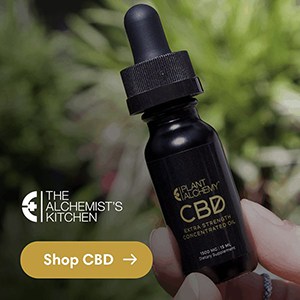Glowing skin has long been a marker of youth and beauty for women and men alike. Since ancient times, people have used tools from nature to enhance their appearance, which in today’s modern economy have become the foundation of the mega-industries of beauty and wellness. While there’s nothing wrong with adding a little gloss, color, or sparkle to the surface of our skin, or addressing problem areas like acne, stretch marks, or wrinkles with topical treatments, these external skin interventions overlook the real root of that spa-day radiance: digestion.
That’s right: What you see on the outside is nothing more than a reflection of how well your body breaks down, transforms, and eliminates what you take in as food. Indigenous and holistic traditions all prioritize digestion as a key to overall health, including the appearance and function of skin. According to the ancient Indian medical science of Ayurveda, skin (rasa dhatu) is actually the first tissue system to be formed from our food, followed by blood (rakta dhatu), which is directly related to skin as blood imparts color/complexion and is involved in the regulation of temperature throughout the body.
When rasa and rakta are not getting the right kinds of food—from imbalances in diet or eating habits, stress, lack of sleep, or other factors that impair digestion—it shows on our skin. The longer impaired or inadequate digestion goes on, the deeper the lack of nutrition can go, affecting the five other tissue layers that Ayurveda describes: muscle, fat, bone, marrow, and reproductive tissue.
Improper elimination can cause such a backup that the skin, which eliminates its own waste through sweat, has to do double-duty in getting toxins out of us—which can show up in the form of rashes, infections, and other irritations. In essence, your skin is like a warning system for current imbalances in your health, which can get nasty if not addressed. Beauty, in this sense, is way more than “skin deep”!

Healing from Within
Whether you’re looking to maintain elasticity in your complexion as you age, or reverse the effects of a condition or other stressor on the skin, starting with your diet (both what and how you consume food) will give you the deepest, and longest-lasting results, This approach won’t necessarily be the fastest. Per Ayurveda our digestive process takes about thirty-five days to complete; but since the issues related to skin are the first to go through digestion, you might see results sooner than you would if working with a deeper issue, like a reproductive imbalance, through diet.
Working with the skin from the inside out also changes the narrative around skincare we get from brands and marketing: Rather than controlling, suppressing, or stopping the natural functions of our skin with harsh products, we’re helping to heal the skin’s natural function of protection and elimination. We’re feeding it and giving it time to rest and restore, so it remembers how to do its (very important) job.
As Emma Graves, herbalist, esthetician, and co-founder of the Brooklyn Herborium, writes, “When your body is able to trust you to give it what it needs when it needs it, no more no less, you can trust your body to take care of you by functioning well.” Graves’s line of functional skincare, Between You and the Moon, offers ritualistic products that help to break the cycle of control other skincare regimens get your skin hooked on, all while connecting you with the natural shifts of the day.
The five foods below are all excellent ways to support healthy skin inside and outside. They’re wonderful to incorporate all year round but especially great for summer. In this season, we often bear more of our skin, making us more aware of any imbalances and more vulnerable to them because of sun exposure. These cooling, toning foods strengthen the skin’s natural ability to protect itself from these stressors, even as they work on existing damage.
From a dietary perspective, they’re also great to incorporate into your summer eating routines. Their overall sweet, bitter, astringent, and cooling properties balance the pitta dosha, which gets aggravated in summer (as well as by hot, spicy, or salty foods like alcohol, barbecue fare, and coffee—even iced!).
When consuming these foods as dietary supplements, it’s best to work directly with a practitioner or consult with a medical expert, especially if you are taking other supplements or medications; you should also avoid herbal protocols when pregnant unless instructed by a practitioner. In general, though, these skin foods are quite gentle in how they interact with the body, whether ingested or applied topically.
Aloe
When it comes to all-around hydration and support of rasa, aloe is a go-to plant ally that’s useful for way more than sunburns. Known as a “hero” herb in Ayurveda, because it balances all the systems of the body and all the doshas, aloe has tremendous medicinal properties on its own in addition to being an excellent carrier (anupan) for other herbal formulas, bringing medicine right where it’s needed.
The Sanskrit name for aloe is kumari, which means “young maiden,” indicating its affinity for promoting youthfulness and the female reproductive system. However, that fountain of youth runs deep, since aloe is also excellent at purifying the blood by working with the liver and spleen. By helping out this center of transformation in the body, aloe will also improve digestion, elimination (your daily detox!), including women’s menstrual cycles. Internally, externally, even spiritually! Aloe is a wound-healer, creating a layer of support and nourishment over any tender spot.
Pro-tip: When shopping for aloe, choose a pure aloe vera gel or juice like Lily of the Desert brand—not the kind you get at the pharmacy for sunburns with lots of chemical additives, or “aloe drinks” loaded with sugar. You can also harvest the gel yourself by filleting aloe leaves from the grocery store. Don’t hack up your aloe house plant, since it may have been treated with pesticides; instead, keeping aloe plants will impart their healing energetics to your space, making them excellent roommates!

Internal Use:
Mix pure aloe gel or aloe juice into plain water or other drinks (pomegranate juice is a great choice, as it also purifies blood) for a deeply hydrating refreshment. To improve the digestive fire and appetite, mix 1 tablespoon aloe gel with a pinch of black pepper and a pinch of ground ginger and take 10 to 15 minutes before meals.
External Use:
Apply pure aloe gel to skin irritations such as psoriasis, ulcers, eczema, dermatitis, stretch marks, and other wounds, burns/sunburn, or sores. During summer, apply aloe gel all over the skin after showering for an instant dose of cool.
Coconut
The healthy fats in coconut have caused a heated debate in the health and wellness world in the last few years. But Ayurveda treats coconut, like all plants, as a food-medicine that can do wonders in the right time and right place. Heavy and cooling in its qualities, coconut can have the potential to clog the channels when used in winter (think about how coconut oil gets solid in cooler temperatures); however, in warmer temperatures or conditions of inflammation, coconut offers high-quality nutrition in the form that won’t aggravate existing heat. Because it comes in so many forms, coconut is easy to work into your diet and self-care rituals.
Pro tip: When buying coconut milk, always choose full-fat (you’ll get the most nutrition and can always dilute it at home if you want it thinner); also avoid coconut products (flakes, butter, water) with added sugar.
Internal Use:
Coconut milk is a great way to add plant-based creaminess to curries, puddings, and other foods that call for dairy cream. For deep hydration and replenishment in heat, coconut water will quench your thirst with its natural sweetness while pumping you with electrolytes. Add coconut flakes to granola, oatmeal, and savory dishes like grain bowls for a bit of crunch and sweetness. Instead of almond or peanut butter, which can be very hard to digest, coconut butter (made by blending dry coconut until smooth) makes a lighter, more mild, and tasty spread or dollop for bread and cakes, warm cereal, or soups.
External Use:
The self-care ritual of abhyanga, or self-massage with oil, isn’t always so appealing on hot, sweaty days. However, if you find your skin drying out in summer from chlorine pools, air conditioning, or a dry-heat/desert environment, choose coconut oil for your ritual, making sure to rinse off the oil after you let it soak in for at least 10 minutes, up to 1 hour.
Coconut oil is also great to use on stretch marks and for oiling the head, since its cooling properties balance the heat that rises in our brains; this oil infused with brahmi, another cooling Ayurvedic herb with an affinity for the mind, can be great for the scalp or whole-body massage. or inflammation on the lips or mouth, as it also has antimicrobial properties. You can further nourish your oral microbiome with a DIY toothpaste: simply mix 2 parts baking soda with 1 part liquid coconut oil, and use it to brush your teeth!
Cucumber
Spa ads featuring someone relaxing with cucumber slices over their eyes aren’t just a cliche. Cooling and hydrating, but also bitter and astringent, cucumber is nature’s offering for plump, clear, and toned skin—inside and out. Their abundance in late summer is also indicative of how useful they are for alleviating heat; just as the accumulation of pitta dosha reaches its peak, we get to harvest these mild but powerful plants and soak up their deep medicine.
Internal Use:
Cucumber’s an easy-going food—it’s meant to be enjoyed just as it is, so no need to fuss with its presentation. Enjoy a simple salad with chopped cucumber, tomatoes, avocado, and dill, or blend it up into a slurpable soup when it’s too hot to cook and your appetite is flagging. Cucumber will balance irritated digestion, such as acid reflux, Chron’s, ulcers, or other inflammatory conditions. Note that consuming cucumber in excess may lead to bloating and gas, or loose stools.
External Use:
Cucumber can reduce puffiness not only around the eyes but anywhere on the skin. Use slices of cucumber or blend it into a puree and mix with aloe gel, and some neem or tea tree oil for irritations like acne. Cucumber-based face masks also offer instant cooling and soothing.
Ghee
An Ayurvedic superfood, ghee is clarified butter that’s beloved for its special actions (prabhava) throughout the system. Deeply nourishing and calming, ghee, like aloe, is an excellent medicine for cases of depletion, dryness, and inflammation, but also works to carry herbal medicines directly to deeper tissues.
The process of making ghee involves cooking organic, cultured, unsalted butter at low heat to remove the fat solids, leaving behind a clear, golden nectar that turns into a semi-solid cream at room temperature. This preparation eliminates the parts of butter that can be hard to digest and creates a higher concentration of butyric acid—the active ingredient in butter that is also made by our (human) guts. Ghee, therefore, supports a healthy microbiome, in addition to the overall digestive process, making it an excellent support for the skin.
Ghee is available at most stores these days, but it’s always best to Make your own ghee from locally sourced butter and on the full moon, if possible. This classic Ayurvedic ritual can connect you more deeply to the energetic ebb and flow of the moon, a natural rhythm tied to women’s menstruation. Plus, by cooking the ghee and letting your jar sit under the moonlight, you’ll be infusing it with the nutrition of the full moon, called soma,for extra medicinal effects.

Internal Use:
Use ghee when cooking instead of oil; it highlights the flavors of spices with a delicious nutty taste, and unlike other oils won’t contribute to inflammation. Ghee is very versatile; just note it’s not the best substitute for butter in baking, though. “Annointing” your food with a dollop of ghee can help ritualize your meals, and infuse any food with soma; it’s delicious spread on fresh bread with a drizzle of honey and pinch of salt. Eating 1 teaspoon a day of ghee is said to be a general rasayana, or rejuvenative, for the whole system. It can also be an anupan for herbal formulas targeting the skin, blood, marrow, and reproductive tissues.
External Use:
Ghee can be used as massage oil (though you might feel extra oily, and may not want to smell like butter!) and is especially good for inflamed or irritated skin, and as lubrication for vaginal dryness (coconut oil is also great for this). Traditionally, Ayurveda uses ghee formulations for clearing the eyes and nasal passages as well, relieving heat from those sensitive sense organs. When cooking with ghee, rub any extra you get on your hands into your skin for a little self-love anytime; or, you can invest in One Hundred Wash Ghee, a special preparation that spins the ghee in a cold-water bath into a light, whipped consistency that is excellent for the face (it’s great for rosacea or psoriasis), lips, or anywhere.
Rose
Roses are associated with love, but these plants offer a special kind of love that makes it a prized medicine in herbal traditions. Form follows function in a rose: with softness, intensity, and clarity in the delicate petals perched on thorny stems, roses offer a light touch of potent medicine inside the body. Cooling and astringent, rose makes a wonderful ingredient for tonifying skin care, and does the same internally as it supports heavy bleeding, hot flashes in menopause, and other irritations related to menstruation. Energetically, rose has an affinity for the heart and evokes soothing, softening, and opening, making it a perfect antidote to stress, anger, and irritability.
Pro tip: When buying rose products, be sure to investigate the source of your flowers so you aren’t ingesting any pesticides; I like Mountain Rose Herbs. Since harvesting rose for products can be intensive, use it with discretion out of respect for the earth’s resources.
Internal Use:
Dried rose petals and rose powder are lovely additions to drinks and desserts—in addition to the lightly sweet taste, the fragrance and prettiness of a rose-strewn dish will make your fare irresistible! A simple way to boost hydration in summer is to add a few rose petals to your water and let them soak; throw in a slice of cucumber, and you’re in heaven! Rosehips come from the fruit of the rose plant, and their more sour taste makes them good for preserves or syrups (and won’t be as cooling as rose petals).
External Use:
Rose essential oil can be a wonderful addition to blends used for perfume or to diffuse into space—most come blended with other oils like sandalwood or geranium, as pure rose oil is extremely expensive. Ayurveda also recommends using rose water to clear irritated eyes, or as part of your daily sense-care routines. Spritz some rose hydrosol on your face, the back of your neck, or anywhere on your body for a cooling refreshment.
**
The skin is our largest organ, as well as our boundary between the outside world and our inner world. It filters what comes in, and eliminates what we don’t need. In this way, the skin is not only our largest organ but our largest digestive organ. When we think about feeding our skin with not only high-quality food, but also with pure air, organic body products, and plant-based clothing, and loving touch from ourselves and others, we create the conditions for our whole body to digest well every day.
By maintaining a balanced lifestyle, full of healthful foods and activities, and relationships that align with your values, your skin will naturally transition out of the protective mode that shows up in irritation and softens into a state of ease and suppleness. Rather than sending a message of “I’m hurt, stay away,” your whole being will express a confident, clear, and inviting message to come closer and get to know the true you—your beautiful soul that emanates through your skin.
You can find more ways to cook with all these plants and more in Root & Nourish: An Herbal Cookbook for Women’s Wellness.
Source: Ayurvedic Medicine by Sebastian Poole







